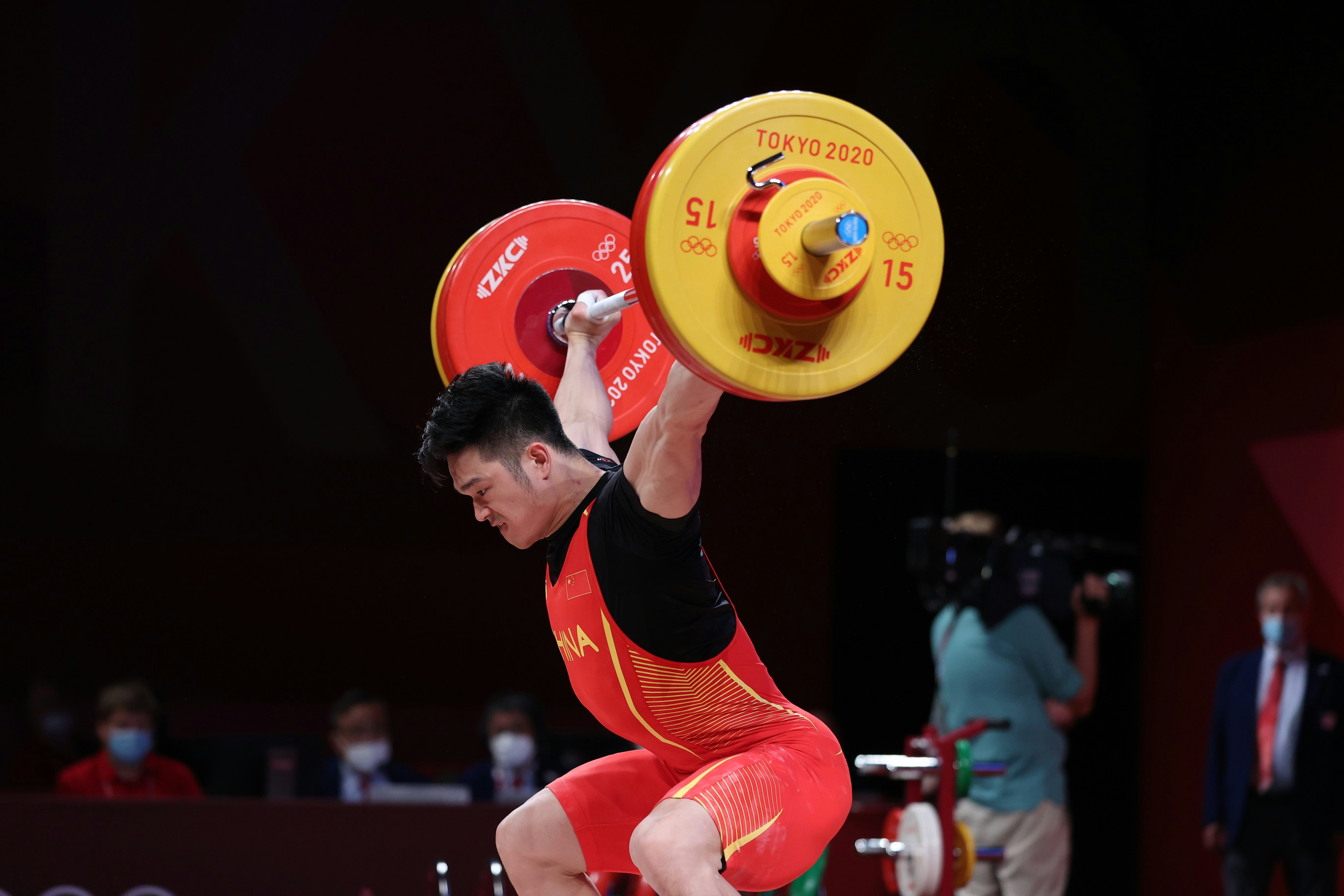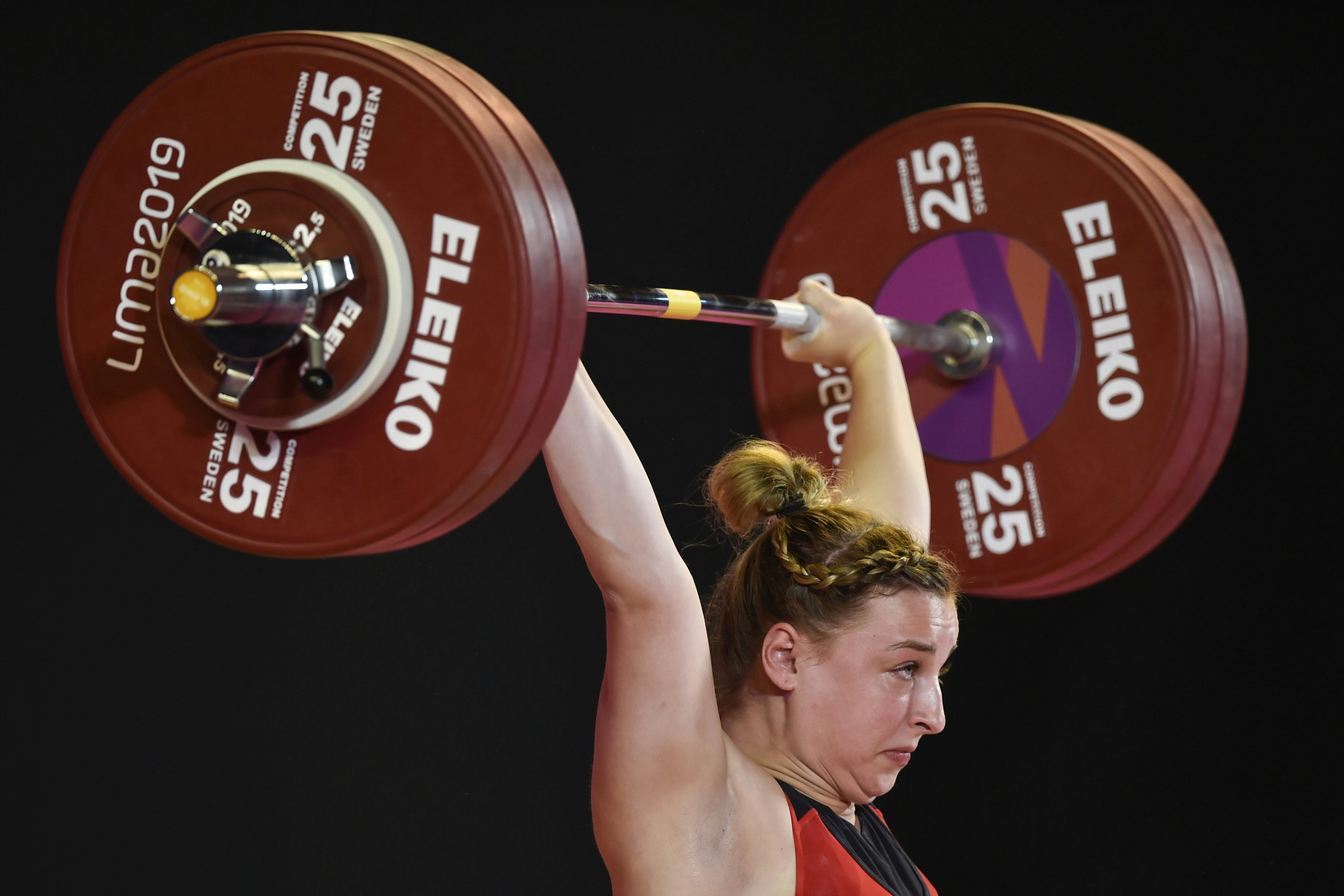
At the 2008 Beijing games, Polish weightlifter Szymon Kolecki shaved his head in solidarity with Tibet. But because it was the Olympics, he wasn’t allowed to say so officially.
Kolecki’s story — what happened in Beijing and what happened next — is a perfect metaphor for both the Olympics in general and weightlifting’s precarious position at the games.
Before the Olympics, Kolecki, then a 94-kilogram lifter, told Polish journalists he was “outraged” by China’s actions and that he’d go bald to support Tibetan monks if the Chinese regime did not become more moderate. When the time came, Kolecki showed up to the platform with short hair, made five of his lifts, and won a silver medal.
After the ceremony, he alluded to his haircut being “symbolic,” an act that was “connected with certain things that the Olympic Charter forbids.”
Kolecki, who missed the ‘04 Athens games because of a steroid ban, had his Beijing medal upgraded to gold a few years ago after the winning medalist was banned on a doping re-test. Both the haircut and medal upgrade were pretty minor news.
Weightlifting, an Olympic centerpiece, is almost inextricable from doping. Though the short or very round men and women lifting absurdly heavy weights in platform shoes seem like a permanent part of the games, the sport might be too dirty to stay. Plagued by decades of doping, bribery, vote-rigging, and corruption, the IWF, weightlifting’s governing body has been given a warning by the International Olympic Committee that the sport could be dropped. The IOC could reach a decision this year.
The punishment feels both hypocritical, considering what we know about the IOC, and overdue. Weightlifting, the most ridiculous sport in the world after baseball, is a certifiable mess. It’s also fascinating to watch.
So with what could very well be the final Olympic weightlifting tournament already in full swing, here’s everything you need to know to get the most out of what might be the last waltz at the Tokyo Games.
What is Olympic weightlifting?

Often used as shorthand to describe strength training or work done in the gym, “weightlifting” more correctly refers to the original Olympic sport, contested since 1896, where lifters rip a weighted barbell off the ground and then over their heads.
Spread out over 14 weight classes — seven women, seven men — athletes compete in two lifts: the snatch, which is one fluid movement, and the clean and jerk, which is two — where the barbell is cleaned to the shoulders, then jerked up. Lifters get three shots at each lift, the best successful attempts combine for a total, and the highest total picks up the gold.
Olympic weightlifting 2021 schedule and who to watch

Weightlifting spans the course of the games, always going from light to heavy, with the women’s 49-kilogram class having taken place on Tokyo’s Opening Day — Hou Zuihui of China took gold and earned three Olympic records — and the superheavies — the rotund, sometimes tall lifters — competing a few days before the Closing Ceremony. The competition is streaming on NBC Sports, with the A sessions — the dozen or so lifters expected to medal or place highly — scheduled for early morning and late night. Primetime coverage, often dependent on American involvement, may be spotty. A full calendar can be found here.
Diehard fans of the sport are probably watching every weight class, but those with limited time can pick and choose. Some star power is missing — North Korea, a weightlifting powerhouse, isn’t competing in Tokyo, and several world-class Chinese and Russian lifters are also missing the games — and doping violations have rendered the Tokyo field a fraction of Rio’s. (Romania, Thailand, Egypt, and Malaysia are banned outright, while Armenia, Azerbaijan, Belarus, Kazakhstan, Russia, and Vietnam each feature only one male and one female competitor.) If the sport stays on the docket in 2024, the field will be even smaller still. With so many good lifters and federations banned, most weight classes — with a couple of exceptions — are depleted at the top, and will have fewer back and forth battles, and more individual displays.
But there are plenty of highlights, with the biggest to follow this weekend. The men’s 81-kilo class airs early Saturday morning — 2:50 a.m. ET! — with the men’s 96 class four hours later. China’s Lu Xiaojun — world record holder, London gold medalist, and five-time world champion — is both the best 81 and the best technical lifter alive. He also just turned 37. Weightlifters don’t tend to age very well, but Xiaojun’s been an exception. Can he keep it up? He’ll turn in either a historic performance or will see the guard change.
The 96-kilo class is one of the best from an aesthetic perspective. It features the perfect blend of strength and speed, as well as a lifter who once did a squat session in a barbershop. It should also be a battle: five lifters are posting entry totals — the weights they expect to lift — within five kilos of each other.

The women’s 76 airs Sunday morning at 6:50 a.m. Eastern, with American Katherine Nye, a 2019 world champ, competing against a somewhat skim field. She could win it all. Her teammate Mattie Rogers, one of the better American lifters, will be exciting to watch as an 87 (Monday morning at 2:50 a.m.). They both seem good candidates to make it to primetime.
The super heavyweight classes round out the games and feature heavy favorites — Li Wenwen of China and Lasha Talakhadze of Georgia — who each hold multiple world records and are at the top of their class. Both should cruise to gold. Talakhadze is the best men’s superheavy in over a decade. He’s as fast and as fluid as any lifter half his size.
How to watch 2021 Olympic weightlifting

Competition lifts are heavy — 61 kg lifter Li Fabin of China clean and jerked just under three times his body weight to take gold — but weightlifting is just as much of a demonstration of skill as it is a strength sport. Lifts are not judged — a lift is either “good” or it’s not, there are no style points — but the sport is all all about angles.
Lifts can be thought of as 400-pound golf swings. A lifter pulls a bar off the ground quickly and precisely enough for them to get immediately under it and squat it upright. (Then, if it’s the clean and jerk, a lifter immediately stands it up overhead without using their arms.) Every step needs to be done very quickly and forcefully — a lift might take a second or two — and the more weight there is on the bar, the harder it stays to maintain the angles and positions.
A successful lift lies at the sweet spot of strength and skill. Every lifter competing in Tokyo is unbelievably strong, with some A-session athletes holding squats that would win raw powerlifting meets. A big squat and bonkers back muscles are necessary but not sufficient to succeed in the sport. Weightlifters’ squats can be thought of as safeguards against failure: because an athlete can’t clean more than they squat, why not squat as much as humanly possible? At their best, elite lifters can clean and jerk (CJ) about 75 to 85 percent of their back squat. (Some coaches calculate off the front squat and get different numbers.) Amateur lifters who don’t have the form down chase that ratio while building up leg strength. Elite lifters, who have done thousands and thousands of reps — and work out all the time, which is where doping comes in — mostly work to perfect the lift at their maximum capability, and keep their leg strength constant.
How to judge a lift at the Olympics

Lifters spend their lives training the lifts so as to “peak” the day of competition, sometimes lifting more in the Olympics than they ever have in the past. Because of this, lifts here may look ugly or strained. Lifters who start off with an optimistic CJ may struggle to get upright in a clean, stand crooked on a jerk, or even get up on one leg. Lifters who try and snatch too much might get eliminated. The limit lifts we see in competition are rarely the best examples of technique. They’re better understood as ways the world’s best athletes are pushed to their limits.
But if a lift looks better, then it’s probably easier. Strength makes technique easier to implement — which gets results. Lifters, like Xiaojun, who get under the bar very quickly often do well. The more upright a lifter stands on the clean — Shi Zhiyong, the Chinese 73 winner, for example — the less taxing it is, the more likely their jerk, and the lift will succeed. Of course, these are guidelines, not rules. The best athlete doesn’t always have the best day, and the best technique does not always take gold.
How weightlifters get to the Olympics

Elite athletes learn and train the lifts differently, but most countries’ programming can be roughly described as being influenced by either Russian, Bulgarian or Chinese methods. Russian programming breaks down the lifts into components — the first, second, and third pulls, the jerk — and adds assistance work (like curls). These lifters tend to be more muscular. The Bulgarian method trains the whole lifts as full movements as heavy as possible, with few assistance exercises aside from front and back squats. (The above is a very generalized description of weightlifting training.) Chinese methods are harder to define, but place great emphasis on balance and musculature.
Countries with centralized training authorities and large talent pools tend to do best. But despite countries’ programming differences, all their lifters generally practice the snatch and clean and jerk in singles, doubles at most — one rep of the snatch, maybe two, near an upper limit, before taking a break and trying the movement again. This preserves form better than Crossfit-type programming where athletes might snatch a bar five times in a row. Still, sets are kept high. Medal-level workouts are so difficult and taxing that most athletes can’t compete without occasional doping.
How to get into weightlifting after the Olympics

Watching weightlifting can turn anyone into a fan, and catching up on training hall footage, where athletes practice lifts and their variants at percentages lower than they lift in competition — and with pitch-perfect form — is a great way to check out get into the lifts. (Hookgrip and AlllThingsGym’s Instagram accounts are fine places to start for this footage.)
Watching these lifts and easy squat sessions for the first time is reality-altering: the movements are faster than anything else in the world involving weights and are precise as a synchronized high dive. With a heavily-loaded bar, the snatch and clean and jerk appear to exist in another dimension: they shouldn’t be possible, and the movements break some unspoken compact about how strong and fast a person should be. (In a sense, there’s so much doping in weightlifting because it asks lifters to do impossible things.)
Weightlifting destroys so much of what we think we know about strength. Its athletes are nimble like Yogis and look like either like bodybuilders, piano movers, or guys with no muscle at all. Absurd volume with heavy weights doesn’t slow weightlifters down, but helps them move faster, and jump higher than just about anyone with their body type. Why wouldn’t anybody with a gym membership want to do all these things?
Anybody can, but it’s a ridiculous amount of work. Because technique continuously breaks down as weight goes up, Olympic lift workouts are brutal: failure is a constant, and success is transitory, at best. Achieving even a bodyweight snatch requires a lifter to live at the gym, building up their squat and perfecting the movements. Training is taxing and boring. The only way to really excel at the sport is to pick it up, preferably in a Communist country, in childhood.
At the amateur level, most decent-sized cities have Olympic weightlifting clubs, where lifters can practice and learn lifts under the supervision of a USA Weightlifting-certified coach. This won’t be going away, even if lifting gets dropped from the games. Most clubs meet a few nights a week at a Crossfit box. USA Weightlifting’s site lists every sanctioned club in America. International lifters can check with their home country’s federation. Lifters who can’t find or afford a club can find good programs online, but because the lifts are incredibly difficult, they should really be learned under pro supervision. They will stall, at best, if they’re not diagnosed by fresh eyes.
Why you should watch Olympic weightlifting

The best thing that can be said about the Olympics is that the dirt that characterizes the IOC, and the IWF, is born out of how good an idea the whole thing is to begin with. games and the sports are in the first place. Of course there’s going to be doping, bribes, corruption and cheating: lifting heavy weights incredibly fast is awesome, and the glory from a gold medal washes away just about everything. The incentives — countries chasing glory, the IOC going after sponsors and viewers — are high. It doesn’t make doping kosher, even if PEDs have been part of the sport for the better part of half a century. It makes it understandable: these drugs just seem to be part of the workouts. It’s a thornier subject than can be covered in a column.
A couple years ago, the IWF created new weight classes, effectively resetting the world records, an unspoken admission that the records set at the height of the Cold War and during the 90s, when doping was likely at its most unchecked, wouldn’t be broken. But those differences, big as they are, are just details. Some have had help. But it’s still all about angles. Lifters like Kolecki, by training a skill, have gotten incredibly strong. For them, strength is a tool, not a goal. Who says we can’t treat it the same way?
LEG DAY OBSERVER is an exploratory look at fitness, the companion to GQ.com’s Snake America vintage column, and a home for all things Leg Day. Due to the complicated nature of the human body, these columns are meant to be taken as introductory prompts for further research and not as directives.
Read past editions of Leg Day Observer for more thoughtful approaches to lifting and eating.







